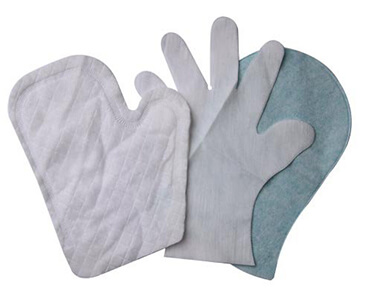NON-WOVEN FABRICS

Non-woven materials are not really fabrics though they give us a feel of being fabrics. There is no interlacing of yarn for internal cohesion as in a woven fabric. In fact, there is organized internal structure in a nonwoven fabric. We have been using these products for quite some time now without knowing about them. It is said that Saint Christopher and Saint Clement placed wool in their sandals to prevent blisters while fleeing to escape persecution and at the end of their journey, this wool turned into woolen socks for them. This is the basic principle of formation of nonwoven fabrics and felt is one of the most common examples of such fabrics. Nonwoven fabrics are made by placing together several fibers and pressing them using heat and pressure to create a fabric. Sometimes adhesive is also used to convert fibers into nonwoven fabrics.
Contemporary non-woven fabric dates to the early1930s. At that time, a few textile companies began experimenting with bonded materials as a way of utilizing cotton waste. The first commercial production of the products now called non-wovens began in 1942 in the United States in an effort to produce fabric directly from fibres. The market for non-woven products has experienced tremendous growth and has potential for more.
Nonwovens may be classified as either disposable or durable goods. Disposable or non durable, nonwovens include such one-time use products as diapers, medical dressings, household wipes, and disposable protective clothing. Durable goods are used for apparel interfacing, automobile headliners, road underlayment, and carpets.
CHARACTERISTICS OF NON-WOVEN FABRICS
The particular set of properties that a non-woven fabric may have is dependent upon the combination of factors in its production. The range of characteristics is wide.
- The appearance of non-woven fabrics may be paper like, felt like, or similar to that of woven fabrics.
- They may have a soft, resilient hand, or they may be hard, stiff, or broadly with little pliability.
- They may be as thin as thin as tissue paper or many times thicker.
- They also may be translucent or opaque.
- T Their porosity may range from low tear and burst strength to very high tensile strength.
- They may be fabricated by gluing, heat bonding, or sewing.
- The drapability of this type of fabrics varies from good to none at all.
- Some fabrics have excellent launderability; others have none. Some may be dry-cleaned.